This article first appeared in Bonsai Focus magazine, issue 4 of 2019.

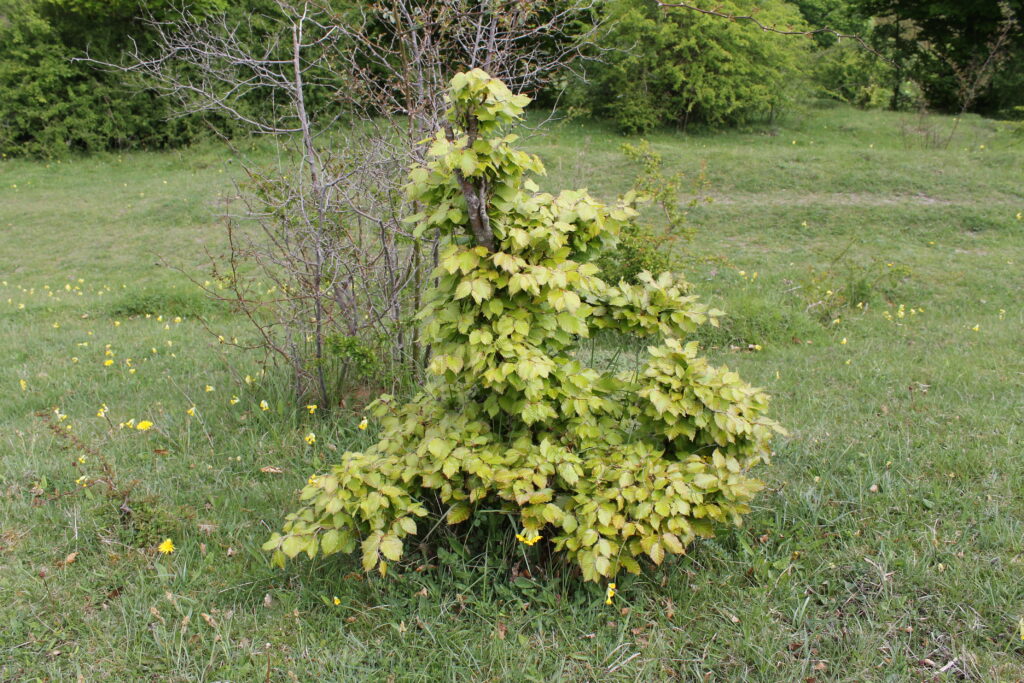
Fagus sylvatica/European Beech growing wild in the Chiltern Hills that run around my home. These have been chewed repeatedly by deer so that despite their 90-100 years, they are still very small and well-ramified.
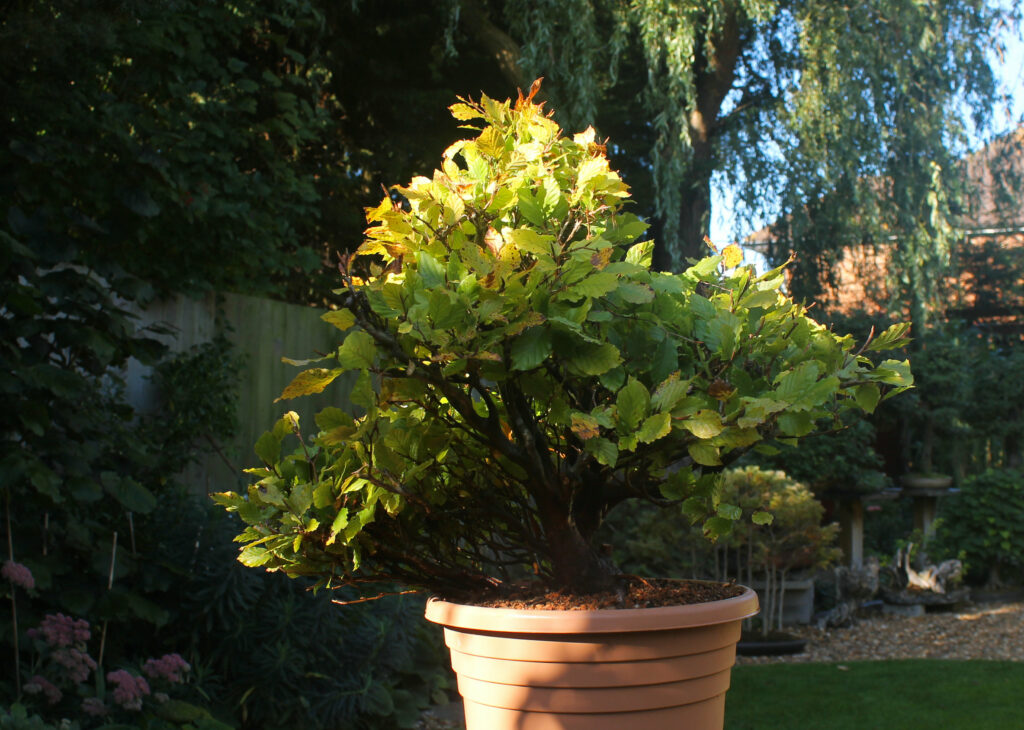
Beech yamadori collected in Autumn 2015. Having grown in a shallow but wet layer of leaf-mould and moss on top of solid bedrock, these trees have very shallow and well ramified roots. The old organic soil is removed by hand prior to potting up, but the roots are not washed to keep some mycorrhizae intact.
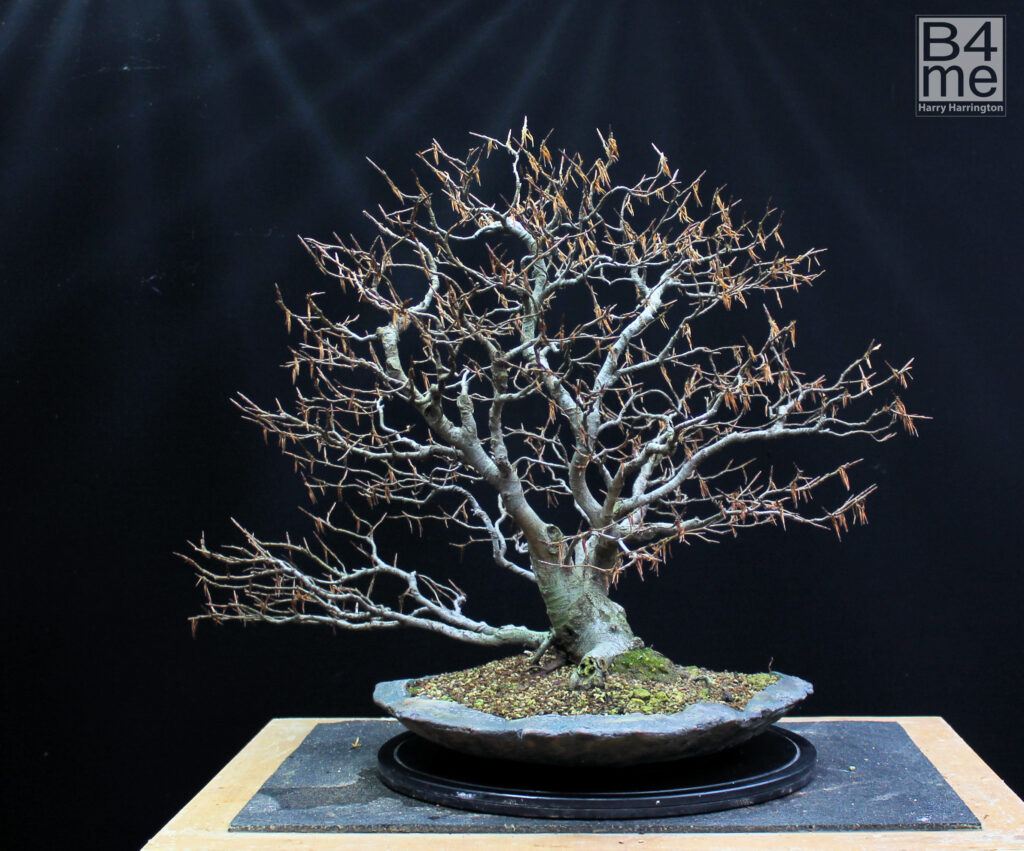
The same Fagus sylvatica/European Beech 7 years later in 2022. Now planted on a slab pot by Victor Harris of Erin Pottery.
The roots of deciduous trees are very active in the late Summer and throughout the Autumn. Having spent the growing season photosynthesizing, a tree will have been involved in the heavy production of sugars through its leaves. As a result, the sugars (as starch) then need to be stored within the trunk and roots in preparation for leaf-fall and the cold winter months. To store as much of these life-giving sugars, the above-ground growth of deciduous trees will slow to a standstill in August leaving the tree to concentrate on the production of new roots.
Collecting deciduous trees during September through to the beginning of December takes advantage of this strong growth under the surface of the soil, at a time when temperatures are cooling and transpiration (loss of moisture) from the leaves is greatly reduced. The earliest start to this collecting season is dependent on your local climate. By September in the UK, night temperatures have dropped to the low double figures, typically the ground will no longer be dry and by October the first autumn colours will be seen on some trees. These are the signs that I can safely go and collect!
It is important when using this timing not to wait until the tree has become too dormant for fear (because the tree is still in leaf) of failure.
Although some deciduous species, and individual specimens, can be successfully collected throughout dormancy, these Autumn months will often yield the best results and survival rate. Having spent the past 3 years collecting Yew, Elm, Pyracantha, Field Maple Hawthorn, Birch, Beech, Blackthorn and Dogwood from early October onwards, along with my apprentice Sean Stop, we have been able to identify that there is a reduction in our success rate from early-December onwards (typically 4-6 weeks after leaf fall).
The fact that Sean and I have now collected a large number of trees from the same locality and use very similar methods to revive them in gardens just a mile apart, has allowed us to compare notes and draw conclusions as to the best times to collect and maintain aftercare. Our findings have then been followed in New Zealand by fellow enthusiast Samuel Brierley who has confirmed that Autumn collecting is as good as, if not better than, collecting in Spring as is traditional.
One major caveat with collecting in Autumn is that the tree needs to be collected with leaves, as many as possible, to fuel new root growth before the tree fully enters dormancy. Therefore, it is not recommended to chop a trunk at the same time as collecting in Autumn. Forward thinking and planning is required; trees that have been marked for collecting are better chopped during the Winter before, or at very least, during the summer before collecting. This will allow them to respond with new growth that will remain on the tree when it is removed from the ground.
I would strongly recommend scouting out trees in the year, or years, prior to collection. Chop them in preparation as necessary, feed them, make sure they are vigorous, and also try to mark them on map software so they can be found again during the cold dark months of dormancy!
It should go without saying that we, as bonsai enthusiasts, have a legal and moral responsibility to collecting. Whether Autumn collecting is applied to trees in domestic hedges or gardens, or the wild, simple respect for the law and nature should be applied. Ensure that you have legal permission to walk and collect on the land. Make sure that the tree has the strength to survive collection and is given the best possible chance of survival with appropriate aftercare. We have been been ‘lucky’ enough to find a location where many many very old trees will be removed by the landowners over the coming decade. However, when looking for material for yourself, consider the possibility that you maybe endangering the life of an old tree as well as removing it from the wild for your own personal use.
Consider the fact that collecting yamadori successfully is not easy, requires a high level of aftercare and the tree may not be workable for 2-3 years, if at all.
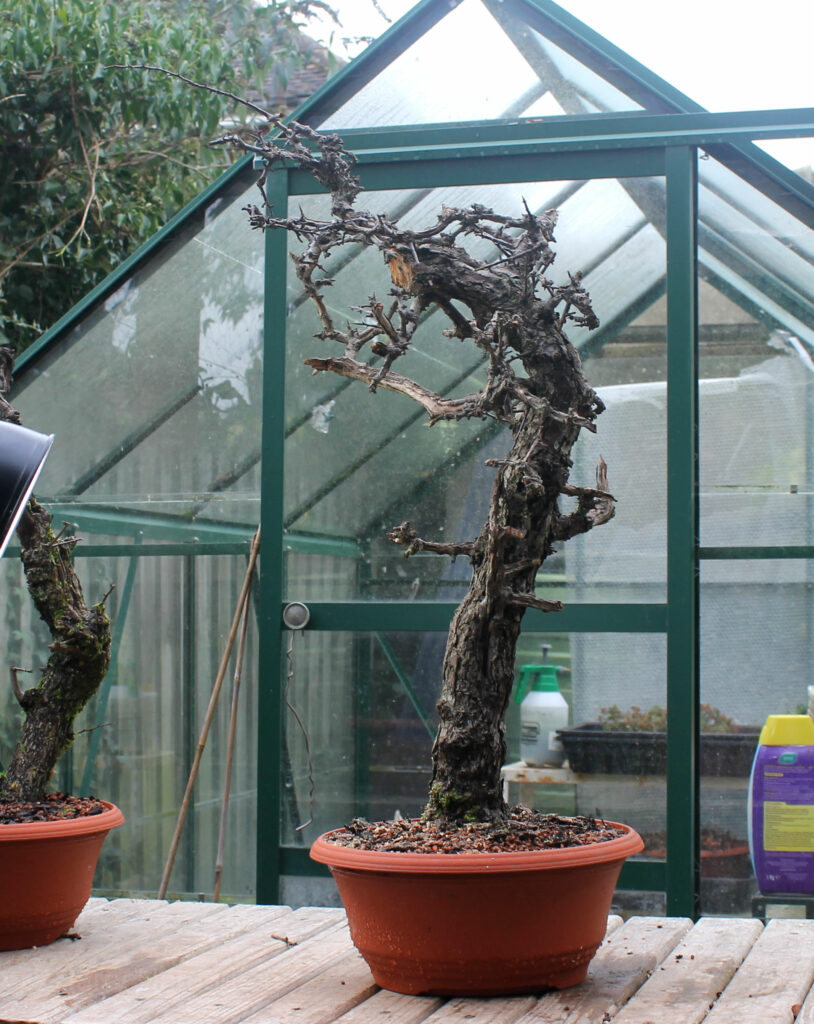
An old Hawthorn collected in early November 2015 as the last of the leaves fall for the Autumn.
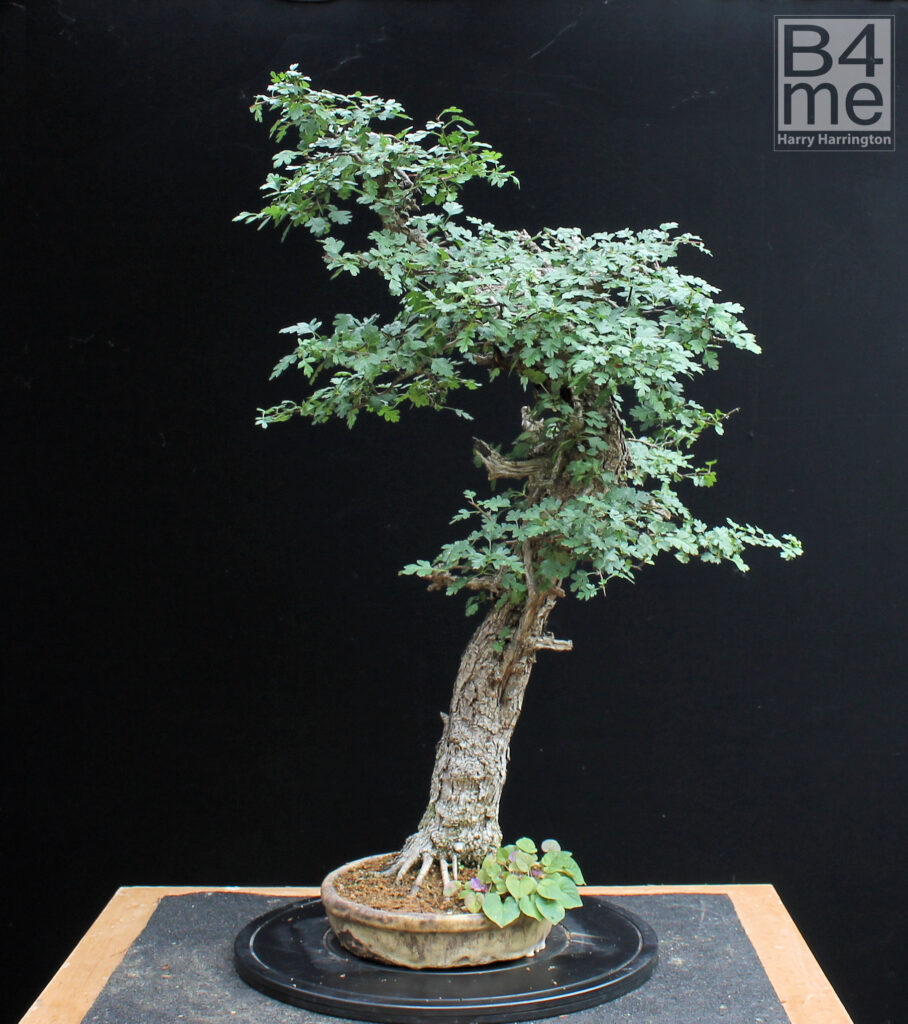
The Hawthorn 6 years later in 2021, planted in a Roy Minarai bonsai pot.
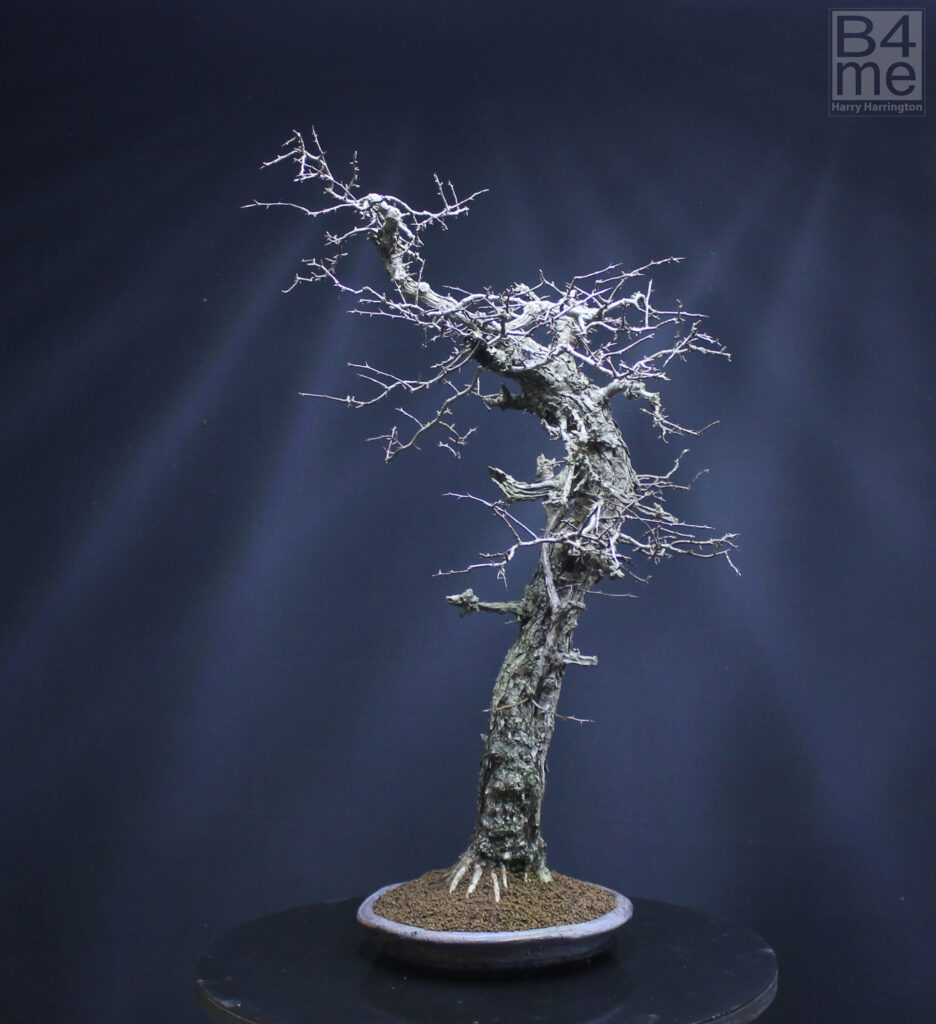
The Hawthorn in early 2023 after repotting into a new Ian Bailey round pot.
Specific Species Information
Note that these details are intended for removing trees from the wild or domestic situations and does not indicate when it is best to repot a bonsai of the same species.
Fagus sylvatica/European Beech
European Beech have a reputation for failing when collected in early Spring and by the time they are ready to burst into leaf in late Spring, temperatures can be too high and the ground too dry. However, we have had extremely good results collecting (and repotting bonsai) Beech in Autumn as soon as the leaves begin to change colour (late September) all the way through until all of the leaves have turned brown, typically late October in the UK.
I would without hesitation recommend collecting in Autumn rather than Spring.
Crataegus monogyna/Common Hawthorn
Our best results have been from early October, through to early December around 4 weeks after leaf-fall. Trees collected from December through to the beginning of February, when the ground isn’t frozen, will survive but our success rates fell. The ‘traditional’ collecting time for Hawthorn is early February onwards until leaf-break and our survival rates were only marginally less than in the Autumn. However the Autumn-collected trees have typically been stronger in the following year.
Betula/Birch species
Great care has to be taken to only prune Birch while they are active or they typically suffer from dieback of branches and/or the trunk itself. When collected while fully dormant, individual heavy roots can fail and lead to dieback up the trunk. However Birch can be successfully collected in early Autumn (September onwards) until the leaves start to change colour around mid-October.
Taxus/Yew, Pyracantha, Ulmus/Elm, Acer campestre/Field Maple, Cornus/Dogwood species
These are all species we have collected during the Autumn months. Although there appears to be little difference between collecting them in Autumn or Spring after the buds start to swell from February onwards.
Quercus/Oak species
Oak species will often have a lack of fine roots close to the trunk and as a result can be difficult to collect successfully using ‘traditional’ early Spring timings. I much prefer to collect them from early September onwards while they are still actively growing roots. Collecting Oak when they become active in Spring is also successful, if the ground is still moist. Unfortunately as Oak are pretty much the last deciduous species to come into growth in the Spring, by mid-May to early June, the ground maybe too dry and day temperatures too hot.
Aftercare
Over the years I have had experience of reviving trees outside without any protection and also with a heated (to +7-+8C) polytunnel with success. But by far the best results have been using an open, unheated polytunnel with plenty of light until the buds start to move in early Spring. Then using light shade and plenty of humidity as the new shoots extend. Hawthorn and Blackthorn are notorious for extending new shoots from stored energy in their trunk and roots, and then the new leaves and shoots failing as temperatures rise in early Summer. This is an indication that there has in fact been no new corresponding rootgrowth. For this reason, it is important to take great care not to bring newly collected trees out of their protective environments too early.
An inorganic soil with good structure is essential for all newly collected deciduous species. Hawthorn and Blackthorn prefer a very large-grained open mix such as large-grain pumice and bark.
Frost protection is preferred (although some enthusiasts, and my experience, report that this is not essential in a UK winter that rarely drops below -10C). However, protection from the wet is an important advantage as the continual rain we can have during the cold winter months in the UK will reduce the possibility of survival. Many enthusiasts who revive their trees outside will place the entire tree (including the pot) into a large black plastic bag in early Spring. This greatly increases humidity around the tree, increases warmth and protection from the drying effects of the wind, and also helps control how wet the soil remains while the new roots are developing.




